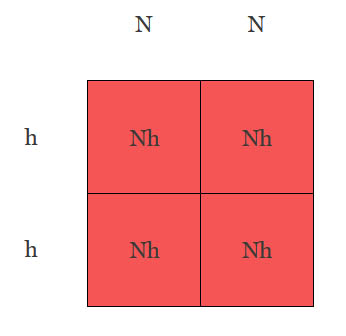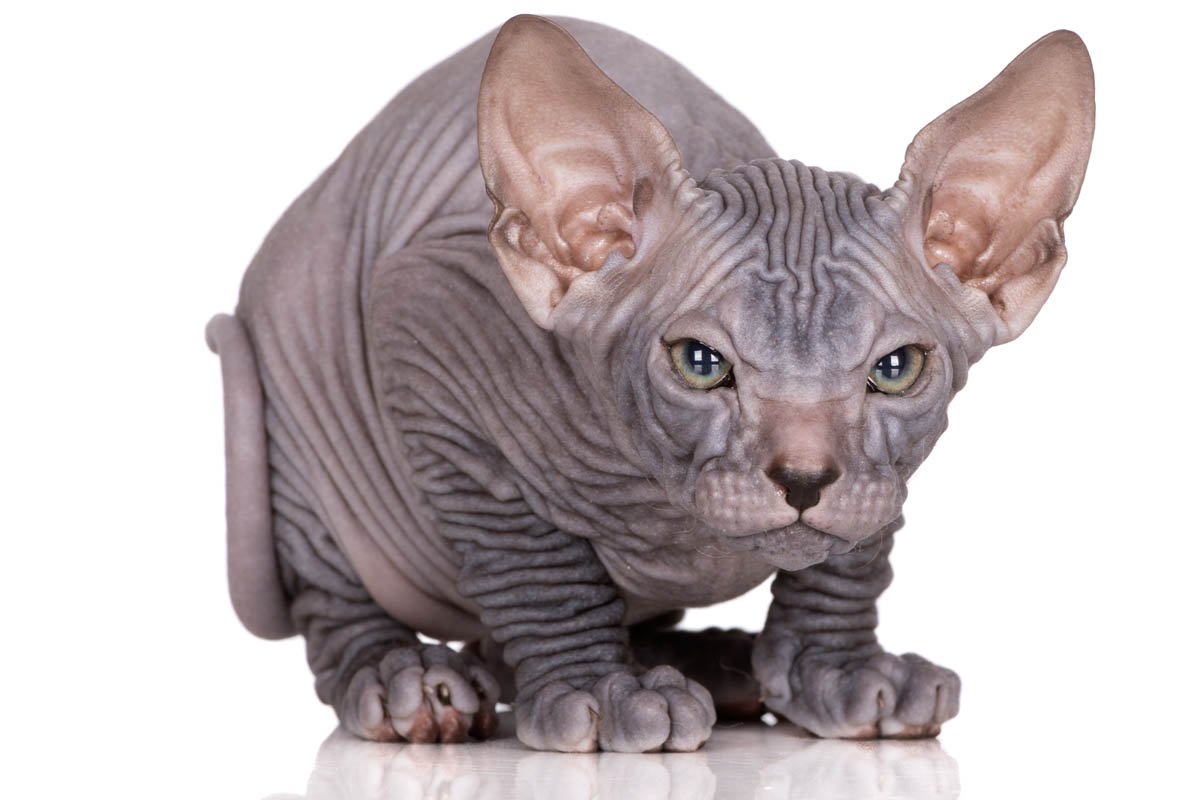What is a Sphynx cat?
The Sphynx cat is described as hairless, although that is not entirely true as it actually has short, downy hair that feels like chamois. The breed originated in Toronto, Canada in 1966 when a black and white tuxedo called Elizabeth gave birth to a hairless male kitten named Prune. Prune was mated back to Elizabeth, and this mating produced more bald kittens.
Hairless cats had occurred prior to that but quickly vanished. Several other hairless breeds are recognised in the cat fancy today including the Peterbald, Don Sphynx, Bambino, Elf, Ukrainian Levkoy and Dwelf. Most of these breeds are man-made Sphynx crosses, such as the Bambino, which is a cross between a Munchkin and Sphynx. The Don Sphynx occurred due to a spontaneous mutation which is different to the Sphynx mutation.
Why are Sphynx cats bald?
Sphynx cats have a recessive mutation on the keratin 71 (KRT71) gene. The keratin 71 (KRT71) gene is responsible for providing keratin protein as the hair emerges from the follicle. Hair forms in the Sphynx cat, but lacks a well-formed hair bulb, which makes the hairs easier to dislodge than that of a normal hair. The mutation is due to a single nucleotide polymorphism (a variation at a single position in a DNA sequence) and possibly an 81-bp deletion followed by two insertions of 8 and 1 bp.

There are three alleles (a different version or versions of the wild-type gene) for the KRT71 gene:
- KRT71hr – Sphynx
- KRT71SADRE – Selkirk Rex
- KRT71re – Devon Rex
Interestingly, while the gene affecting the coat of Devon Rex and Sphynx cats is recessive, the gene responsible for the curly coat of the Selkirk Rex is dominant, and therefore the cat only needs one copy of the gene for the coat to be curly. Test matings between Sphynx and Devon Rex cats found that the Sphynx hairlessness is dominant to the rex coat. [1]
The spontaneous mutation which resulted in the unusual appearance of the Sphynx occurred naturally and is not due to genetic modification.
What would happen if you mated a Sphynx to a normal cat?
If you mated a Sphynx to a cat with a normal coat, the resulting kittens would all have a normal coat, but carry a copy of the recessive KRT71hr gene. If those offspring mated with a Sphynx cat, some of the offspring would be hairless.
For the sake of ease, I have assigned the following letters to normal coated cats and Sphynx cats. N is dominant, and therefore is always written in UPPERCASE, h is recessive, and is always in lowercase.
- N – Normal coat
- h – Sphynx
The Punnett square assumes the litter contained four kittens. Each kitten is born with a normal coat but carries the recessive KRT71hr Sphynx gene.

If two kittens from the litter mated, the following offspring could be a mix of kittens with coats and kittens without.
- One kitten would be homozygous for normal coat (NN)
- Two kittens would be heterozygous, meaning they have a normal coat, but carry the hairless gene (Nh)
- One kitten would be homozygous for the hairless gene and would be hairless (hh)

Why are Sphynx cats bred to be hairless?
Cat breeds come in all shapes and sizes from the tiny Toybob to the imposing Maine Coon. Some of these breeds are naturally occurring, some are man-made by cross-breeding different breeds, and some came about due to a spontaneous mutation. The interesting and unique appearance of the first hairless cats born in Toronto, made breeders want to pursue a breeding programme and introduce these cats to the cat fancy and wider population.
As far as having a Sphynx in the home, some people find the lack of hair appealing. While not strictly hypoallergenic, the Sphynx sheds considerably less hair than a normal cat which may in some cases may lead to reduced allergy symptoms. Fel d1, the protein responsible for allergies to cats, is in the saliva, and even Sphynx cats produce this it.
Are Sphynx cats unhealthy?
The KRT71 gene affects the Sphynx cat’s coat only and has no impact on the cat’s health. Due to the lack of fur which would naturally take up sebum, an oily substance produced by the sebaceous glands, Sphynx cats are prone to developing greasy skin. The lack of hair also makes the Sphynx more at risk of sunburn or hypothermia in cold weather.
Pet owners may also notice blackheads on the chin of their Sphynx. This is a common condition known as feline acne and occurs in cats with hair also. The lack of hair can make feline acne more noticeable in the Sphynx cat. There are a number of treatments for acne depending on the severity. Mild cases can be managed with a simple wash with chlorhexidine, Betadine or witch hazel. Moderate to severe cases will require prescription medications.
Resources:
[1] Vella, C. M., & Robinson, R. (2002). Robinson’s genetics for cat breeders and veterinarians. Butterworth-Heinemann.

